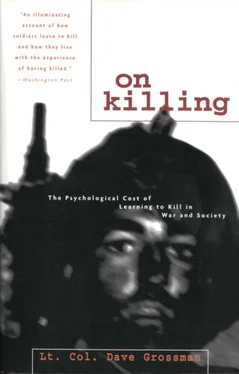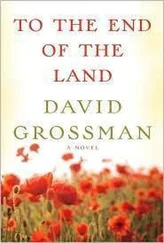When the framers of the U.S. Constitution wrote the Second Amendment, guaranteeing the right to keep and bear arms, they never dreamed that the concept of “arms” could someday include weapons of mass destruction that can vaporize whole cities. In the same way, until late in this century, no one ever dreamed that the right to free speech could include mechanisms of mass conditioning and desensitization. During the 1930s our society began for the first time to consider the need to control access to high explosives, and today even the most rabid defender of Second Amendment rights would not argue for private ownership of rental trucks full of high explosives, artillery, nerve gas, or nuclear arms. In the same way, perhaps the time has come for society to consider the price being paid for the implications of technology on some First Amendment rights.
There is no more need to constrain the print media than there is to control bowie knives, tomahawks, or flintlock rifles, but there might just be a justification for controlling the technology that goes beyond print media and flintlocks. The more advanced the technology, the greater the need for control. In the realm of weapons technology that means controlling explosives, artillery, and machine guns, and it may mean that the time has come to consider controlling assault rifles or pistols. In the realm of media technology, that may mean that the time has come to consider controlling TV, movies, and video games.
Technology has leapfrogged in a variety of ways that change the context of violence in our society. Today technology has enabled distribution of a much wider variety of entertainment: movies, television, videos, video games, multimedia and interactive television, specialized magazines, and the Internet. The result is that entertainment is now a private act. In many cases this is good, but in many other cases it has had the potential for developing, feeding, and sustaining individual pathologies. We have a two-hundred-year-old tradition of protecting the right to free speech and the right to bear arms. Obviously, though, our founding fathers did not have these factors (let alone operant conditioning!) in mind when they wrote the Constitution.
Media critic Michael Medved believes that some form of censorship (either self-censorship or the formal, legal kind) is in the cards, and that this might not be so bad, pointing out that the age of censorship in Hollywood was also the age of greatest artistry, yielding movies such as Gone with the Wind and Casablanca. As Simon Jenkins put it in a London Times editorial:
Censorship is external regulation and therefore professional anathema. Yet such sanction is the community’s natural response to what it feels might threaten its stability, be it adulterated food, dangerous drugs, guns or films that incite social evils. Film-makers, like all artists, claim a license from such sanction. They are observers outside of society looking in. But the license is held on lease. It is not freehold. It can be withdrawn.
But the road to resensitization is probably not through formal censorship. There may be a legitimate place for new laws and legal constraints in our future, but oppression of one sort can never truly be relieved by other forms of oppression, and in today’s video society it would be difficult to completely squelch all manifestations of violence enabling. However, we may be able to find compromises that can put us back on the road toward becoming the kind of society that most of us want, while still respecting the rights of one another. What is needed is not censorship, at least not censorship in any legal or legislative sense.
There is a sound argument for changing the way we view and apply First Amendment rights, but I do not advocate it. I do, however, believe that the time has come for our society to censure (not censor) those who exploit violence for profit. In A. M. Rosenthal’s words we must “turn entirely away from those ugly people, defeating them by refusing them tolerance or respectability.”
What we must realize is that our society is trapped in a pathological spiral with all vectors pulling inward toward a tighter and tighter cycle of violence and destruction.
The prescription for resensitization is as complex and interactive as has been the path to our current dark state. Guns, drugs, poverty, gangs, war, racism, sexism, and the destruction of the nuclear family are just a few of the factors that can act to cheapen human life. The current debates over euthanasia, abortion, and the death penalty indicate that we are divided over the ethics of life and death. To greater or lesser degrees each of these factors helps to pull us toward destruction, and any comprehensive war on crime needs to consider all of them. But these factors have always been there. The new factor that is at work today is the same factor that increased the firing rate from 15 to 20 percent in World War II to 90 to 95 percent in Vietnam. The new factor is desensitization and killing enabling in the media.
Television programmers have always tried to claim the “best of two uncomfortably contradictory worlds,” as Michael Medved puts it. It is really not new or profound to point out that television executives have for years claimed that they are not capable of influencing our actions or changing behavior, but for decades America’s major corporations have paid them billions of dollars for a paltry few seconds or a minute to do just that. To sponsors, media executives claim that just a few well-placed seconds can control how America will spend its hard-earned money. But to Congress and other watchdog agencies they argue that they are not responsible for causing viewers to change the way they will respond to any emotionally charged, potentially violent circumstance that they may subsequently find themselves in. This in spite of the fact that, as of 1994, there have been more than two hundred studies demonstrating the correlation between television and violence. [50]
This body of scientific evidence against the media is overwhelming. In March 1994, Professor Elizabeth Newson, head of the child-development unit at Nottingham University, in England, released a report signed by twenty-five psychologists and pediatricians. They wrote:
Many of us hold our liberal ideals of freedom of expression dear, but now begin to feel that we were naive in our failure to predict the extent of damaging material and its all-too-free availability to children. By restricting such material from home viewing, society must take on a necessary responsibility in protecting children from this, as from other forms of child abuse.
By calling for legislation to limit the availability of “video nasties,” Professor Newson and her colleagues raised a storm of controversy in Britain. They also became the latest in a series of scientists to publicly join the ever-swelling ranks of those who are convinced by the scientific research linking violence in the media to violent crime.
In the spring 1993 issue of The Public Interest, Dr. Brandon Canterwall, professor of epidemiology at the University of Washington, summarized the overwhelming nature of this body of evidence. His report focused on the effect of television when it was introduced to rural, isolated communities in Canada and when English-language TV broadcasts were permitted in South Africa in 1975, having previously been banned by the Afrikaans-speaking government. In each case, violent crime among children increased spectacularly.
Canterwall points out that aggressive impulses, like most human phenomena, are distributed along a bell-shaped curve, and the significant effect of any change will occur at the margins. He notes:
It is an intrinsic effect of such “bell curve” distribution that small changes in the average imply major changes at the extremes. Thus, if an exposure to television causes 8 percent of the population to shift from below-average aggression to above-average aggression, it follows that the homicide rate will double.
Читать дальше







